
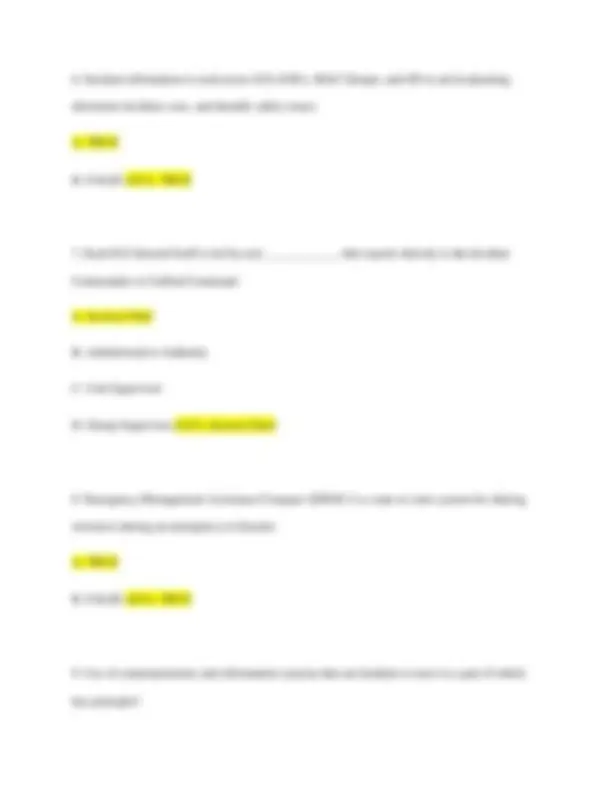
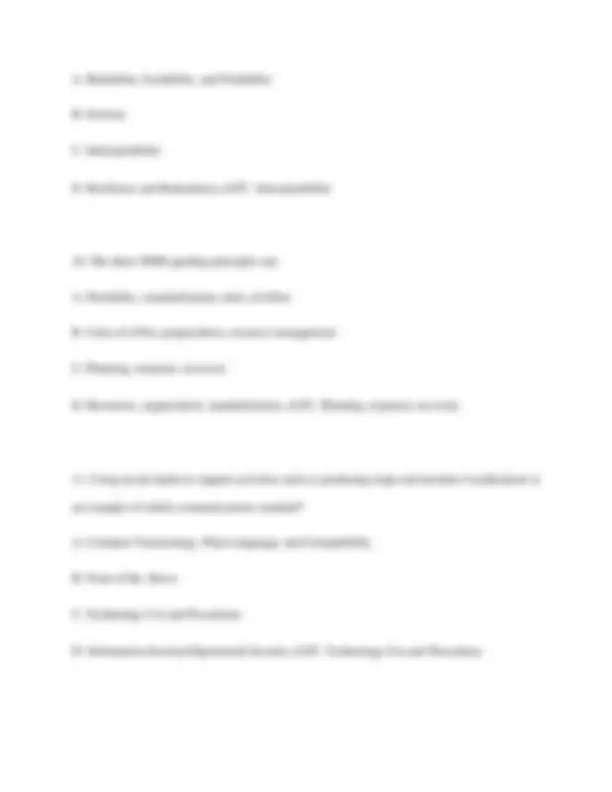
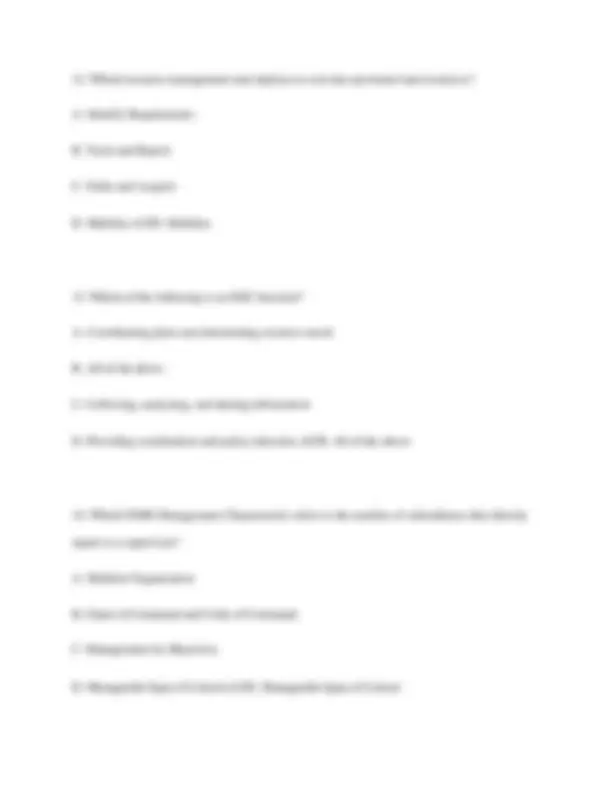
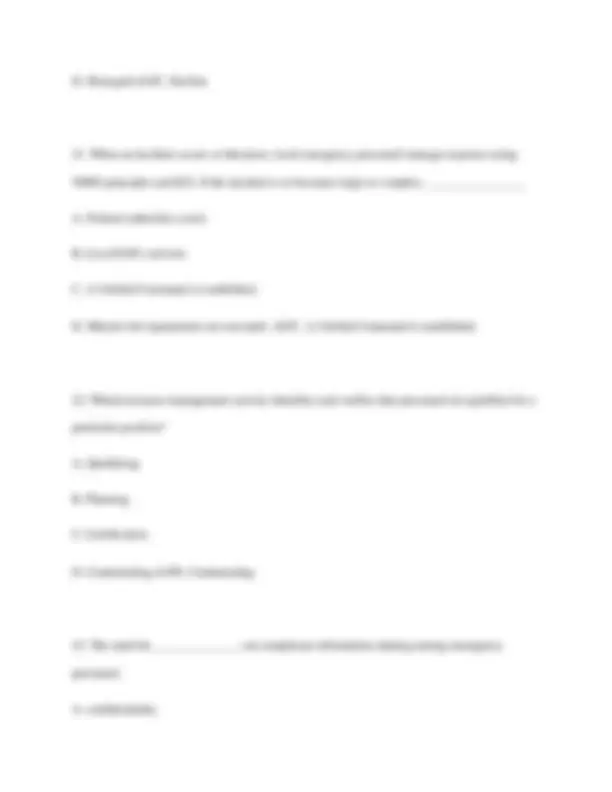

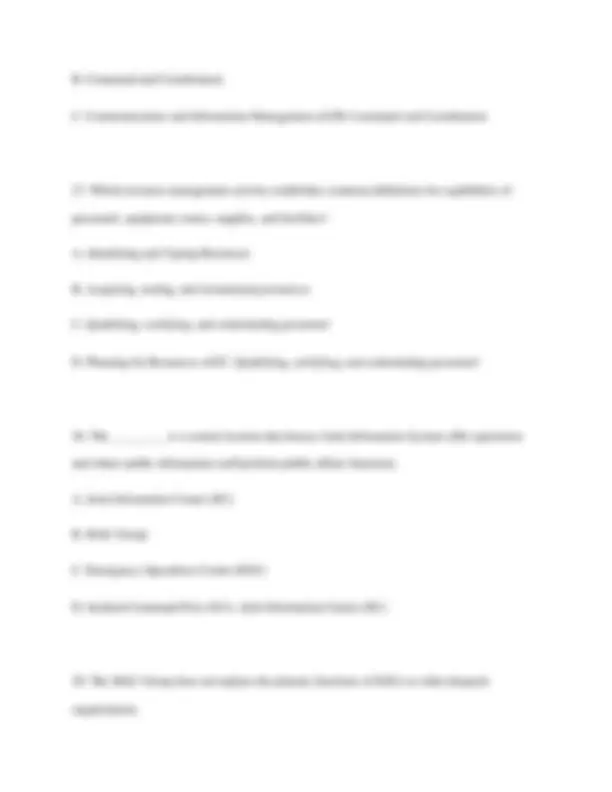
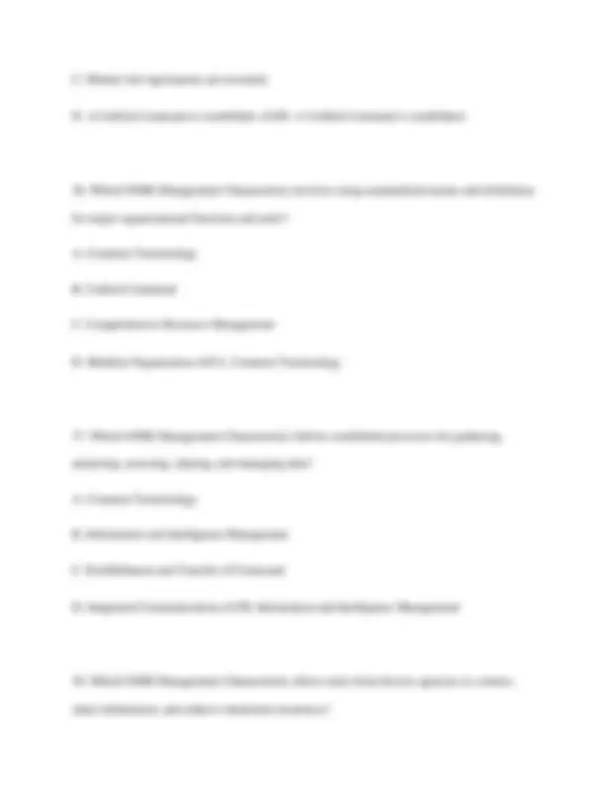
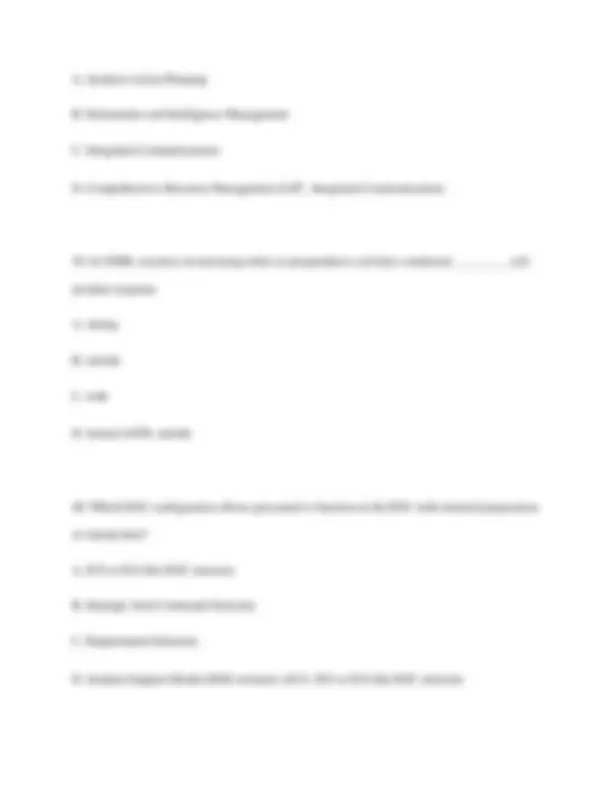
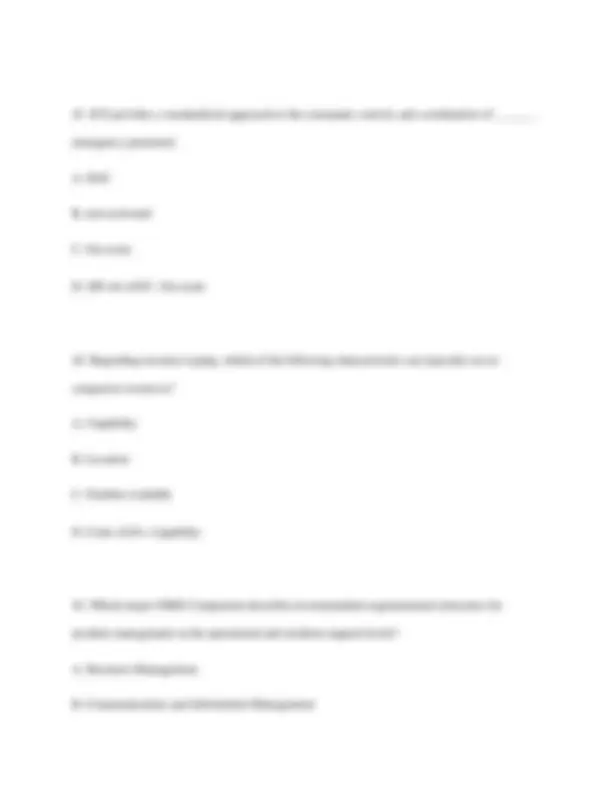
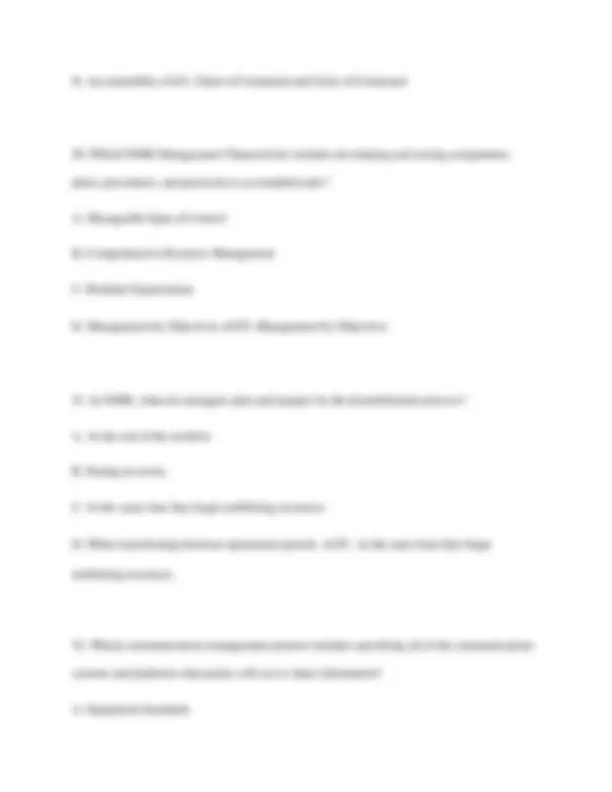
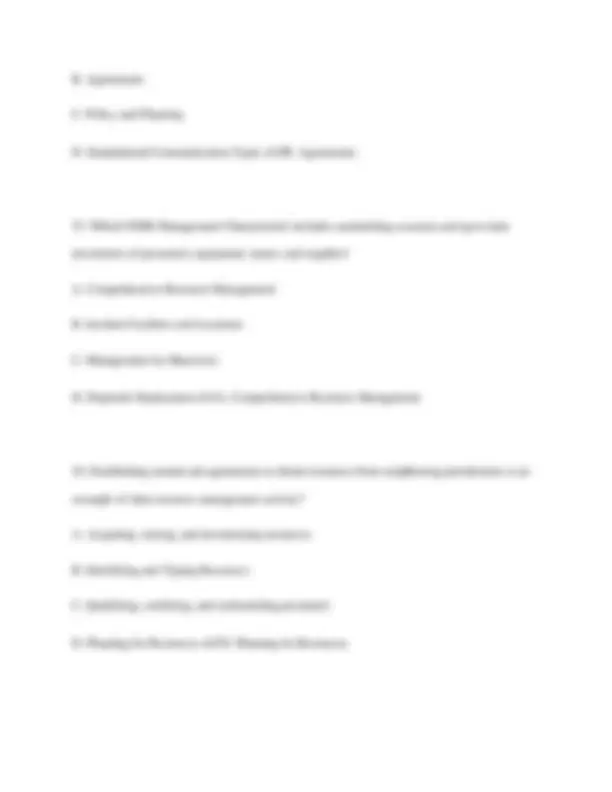
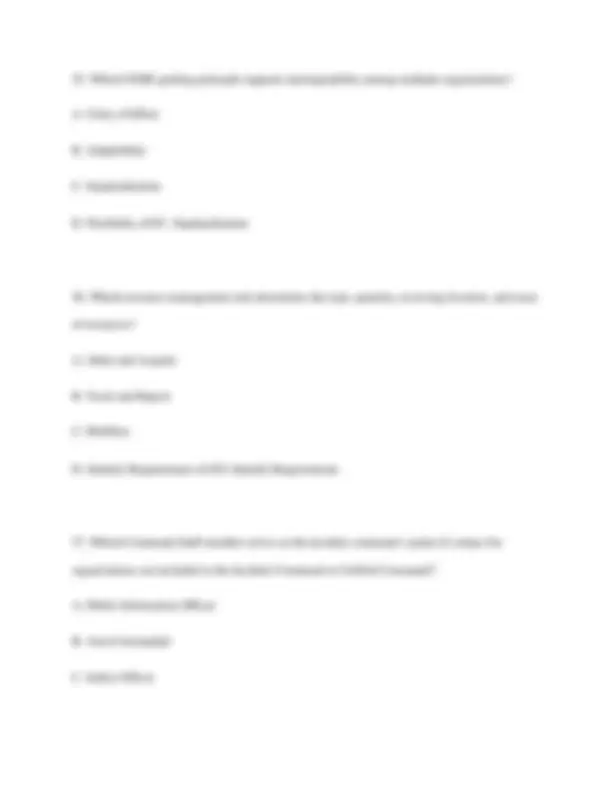



Study with the several resources on Docsity

Earn points by helping other students or get them with a premium plan


Prepare for your exams
Study with the several resources on Docsity

Earn points to download
Earn points by helping other students or get them with a premium plan
Community
Ask the community for help and clear up your study doubts
Discover the best universities in your country according to Docsity users
Free resources
Download our free guides on studying techniques, anxiety management strategies, and thesis advice from Docsity tutors
1. Which NIMS Management Characteristic includes documents that record and communicate incident objectives, tactics, and assignments for operations and support? A. Common Terminology B. Information and Intelligence Management C. Incident Action Planning D. Integrated Communications ✔✔C. Incident Action Planning 2. Which ICS structure enables different jurisdictions to jointly manage and direct incident activities with a single incident action plan? A. Area Command B. Joint Information Center
Typology: Exams
1 / 21

This page cannot be seen from the preview
Don't miss anything!














A. Common Terminology
B. Information and Intelligence Management
C. Incident Action Planning
D. Integrated Communications ✔✔C. Incident Action Planning
A. Area Command
B. Joint Information Center
C. Unified Command
D. Incident Management Team ✔✔C. Unified Command
A. Common Terminology
B. Information and Intelligence Management
C. Integrated Communications
D. Establishment and Transfer of Command ✔✔B. Information and Intelligence Management
A. Common Terminology
B. Unified Command
C. Modular Organization
D. Comprehensive Resource Management ✔✔C. Modular Organization
A. Order and Acquire
B. Demobilize
C. Reimburse and Restock
D. Track and Report ✔✔D. Track and Report
A. Reliability, Scalability, and Portability
B. Security
C. Interoperability
D. Resilience and Redundancy ✔✔C. Interoperability
A. Flexibility, standardization, unity of effort.
B. Unity of effort, preparedness, resource management.
C. Planning, response, recovery.
D. Resources, organization, standardization. ✔✔C. Planning, response, recovery.
A. Common Terminology, Plain Language, and Compatibility
B. None of the Above
C. Technology Use and Procedures
D. Information Security/Operational Security ✔✔C. Technology Use and Procedures
A. Identify Requirements
B. Track and Report
C. Order and Acquire
D. Mobilize ✔✔D. Mobilize
A. Coordinating plans and determining resource needs
B. All of the above
C. Collecting, analyzing, and sharing information
D. Providing coordination and policy direction ✔✔B. All of the above
A. Modular Organization
B. Chain of Command and Unity of Command
C. Management by Objectives
D. Manageable Span of Control ✔✔D. Manageable Span of Control
D. MAC Group ✔✔B. Emergency Operations Centers (EOCs)
A. TRUE
B. FALSE ✔✔A. TRUE
A. Operations
B. Finance/Administration
C. Planning
D. Logistics ✔✔C. Planning
A. Redirect
B. Store
C. Decline
D. Disregard ✔✔C. Decline
A. Federal authorities assist.
B. Local EOCs activate.
C. A Unified Command is established.
D. Mutual Aid Agreements are executed. ✔✔C. A Unified Command is established.
A. Qualifying
B. Planning
C. Certification
D. Credentialing ✔✔D. Credentialing
A. confidentiality
B. Command and Coordination
C. Communications and Information Management ✔✔B. Command and Coordination
A. Identifying and Typing Resources
B. Acquiring, storing, and inventorying resources
C. Qualifying, certifying, and credentialing personnel
D. Planning for Resources ✔✔C. Qualifying, certifying, and credentialing personnel
A. Joint Information Center (JIC)
B. MAC Group
C. Emergency Operations Center (EOC)
D. Incident Command Post ✔✔A. Joint Information Center (JIC)
A. Level 1 - Full Activation
B. Level 4 - No EOC is required
C. Level 3 - Normal Operations/Steady-State
D. Level 2 - Enhanced Steady-State ✔✔D. Level 2 - Enhanced Steady-State
A. Reliability, Scalability, and Portability
B. Security
C. Resilience and Redundancy
D. Interoperability ✔✔D. Interoperability
C. Mutual Aid Agreements are executed.
D. A Unified Command is established. ✔✔D. A Unified Command is established.
A. Common Terminology
B. Unified Command
C. Comprehensive Resource Management
D. Modular Organization ✔✔A. Common Terminology
A. Common Terminology
B. Information and Intelligence Management
C. Establishment and Transfer of Command
D. Integrated Communications ✔✔B. Information and Intelligence Management
A. Incident Action Planning
B. Information and Intelligence Management
C. Integrated Communications
D. Comprehensive Resource Management ✔✔C. Integrated Communications
A. during
B. outside
C. with
D. instead ✔✔B. outside
A. ICS or ICS-like EOC structure
B. Strategic Joint Command Structure
C. Departmental Structure
D. Incident Support Model (ISM) structure ✔✔A. ICS or ICS-like EOC structure
C. Command and Coordination ✔✔C. Command and Coordination
A. MAC Groups
B. Incident Command System
C. Emergency Operations Center (EOC)
D. Joint Information System (JIS) ✔✔A. MAC Groups
A. MAC Groups
B. Incident Command System
C. Joint Information Center
D. Joint Information System (JIS) ✔✔A. MAC Groups
A. TRUE
B. FALSE ✔✔A. TRUE
A. MAC Groups
B. Incident Command System
C. Emergency Operations Center (EOC)
D. Joint Information System (JIS) ✔✔A. MAC Groups
A. Reimburse and Restock
B. Track and Report
C. Mobilize
D. Order and Acquire ✔✔A. Reimburse and Restock
A. Chain of Command and Unity of Command
B. Management by Objectives
C. Information and Intelligence Management
B. Agreements
C. Policy and Planning
D. Standardized Communication Types ✔✔B. Agreements
A. Comprehensive Resource Management
B. Incident Facilities and Locations
C. Management by Objectives
D. Dispatch/ Deployment ✔✔A. Comprehensive Resource Management
A. Acquiring, storing, and inventorying resources
B. Identifying and Typing Resources
C. Qualifying, certifying, and credentialing personnel
D. Planning for Resources ✔✔D. Planning for Resources
A. Unity of Effort
B. Adaptability
C. Standardization
D. Flexibility ✔✔C. Standardization
A. Order and Acquire
B. Track and Report
C. Mobilize
D. Identify Requirements ✔✔D. Identify Requirements
A. Public Information Officer
B. Area Commander
C. Safety Officer